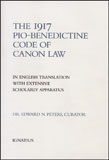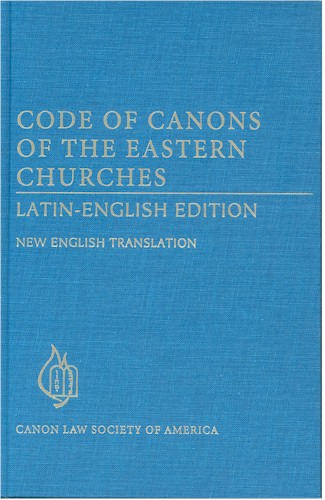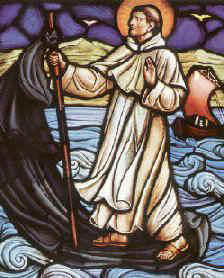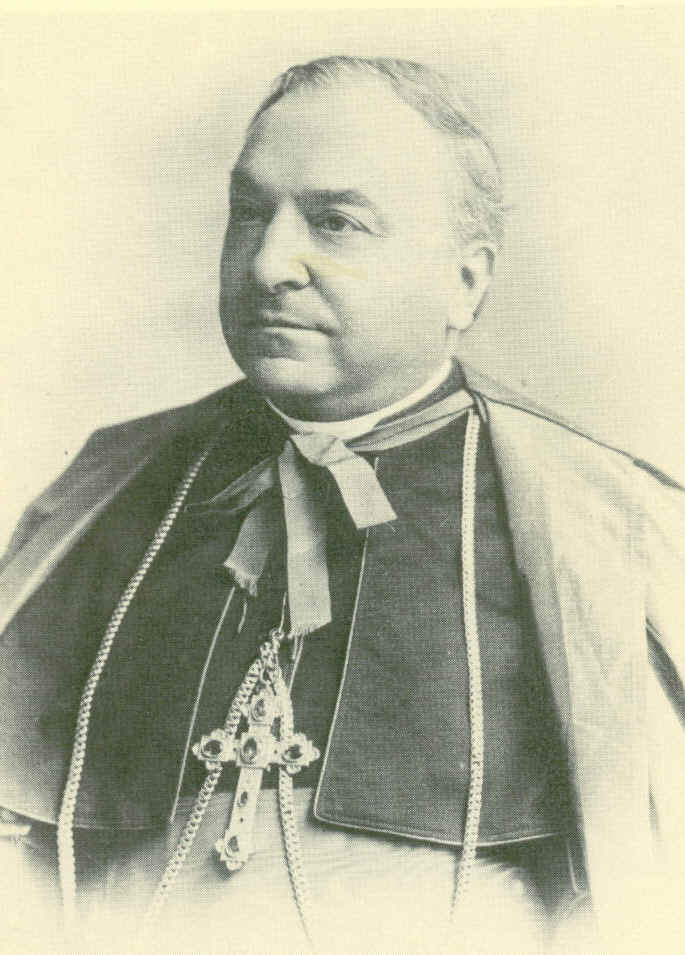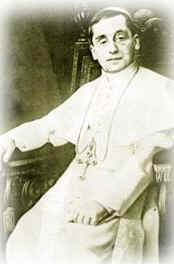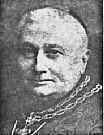|
To work for the proper implementation of canon law is to play an extraordinarily constructive role in continuing the redemptive mission of Christ. Pope John Paul II |
|
|
|
|
Resolution 1152 x 864 |
Updated 3 jan 2013 |
Translations for use in studying the Pio-Benedictine Code of Canon Law |
|
Translation and Brief Commentary by Dr. Peters, appeared first in Canon Law Society of Great Britain in Ireland Newsletter, June 2004, pp. 106-107.
|
Cardinal Gasparri’s letter Perlegisti
From the Codification Commission, Universities of Studies must contribute to the work of codification
Already the Supreme Pontiff greatly desires that the University of studies over which You preside contribute to this difficult and most important labor. Thus he directs You to enquire among those who handle canon law in the University and thereafter send to me as soon as possible whatever parts of canon law seem ready to cast into articles or canons. Having received Your response, special instruction will be sent by which opportune norms in service to this matter will be delivered to those concerned.
For the rest, as directed by the most Blessed Father, I convey to you especially my high regard, etc., Abp. Pietro Gasparri, Secretary for the Codification Commission…from Rome, 6 April 1904.
|
|
Brief Commentary on Perlegisti
|
Some 100 years ago, Pietro Cardinal Gasparri addressed a short but fascinating letter to Catholic universities engaged in teaching canon law [1]. Written just a few weeks after receiving from Pope St. Pius X his mandate to begin work on the codification of canon law, [2] Gasparri’s letter solicits the support of Catholic universities in the arduum munus that the codification project would be. Along the way, his letter also provides an early description of the basic structure that the Pio-Benedictine Code would eventually adopt, as well as some evidence that an alternative structure was still being considered at the time.
After underscoring the Roman Pontiff’s directive calling for nothing less than the reduction of “all of canon law” into canons along the models of recent civil Codes, Gasparri wrote: “The order to be observed [in the new code] will more or less be as follows: being preceded by a general part consisting of the titles De Summa Trinitiate et fide catholica, De Constitutionibus, De Consuetudine, [and] De Rescriptis, there will be five books: De Personis, De Sacramentis; De Rebus et Locis sacris, De Delictis et Poenis, [and] De Iudiciis.”
What became the books of the 1917 Code are immediately recognizable in this very early outline: Persons, Things (into which Gasparri had put Sacraments and Things and Sacred Places), Crimes and Penalties, and Trials (albeit reversing the order of the last two books during the codification process) [3]. That leaves only Book I of the Pio-Benedictine Code, General Norms, unaccounted for, but recognizing such topics as Custom and Rescripts among his proposed preliminary “titles”, we can easily surmise that these matters were grouped with others then unnamed in what finally emerged as Book I of the 1917 Code. In this regard, Perlegisti reads consistently with the idea that Gasparri had long wanted to work on a canonical codification project and had obviously given it much preliminary thought [4].
But the proposed preliminary “titles” that were eventually organized instead into a book on Norms bear closer examination. Whence did they arise? Quite clearly, they are the opening titles of St. Raymond Peñafort’s Quinque Libri Decretalium (1234), namely, tit. I De Summa Trinitiate et fide catholica, tit. II De Constitutionibus, tit. III De Rescriptis, and tit. IV De Consuetudine [5]. In other words, I suggest that, at the outset of his work, Gasparri still had two competing models in mind for the code of canon law, one drawing on St. Raymond’s title system—the canonical categories in which Gasparri would obviously have been steeped—the other a more radical reclassification of canonical topics as part of the code. Now Gasparri had noted in Perlegisti that the order proposed “at the beginning can be changed if in the progress of studies it seems opportune to accommodate the work undertaken by the consulters.” Clearly, that is what happened, with the latter, more modern system of categorizing canonical concepts finally winning out but not, it seems, without some consideration being given to lifting at least parts of St. Raymond’s title structure directly into the Church’s first comprehensive code of canon law [6].
[1] Petrus Gasparri, letter “Perlegisti” (6 apr. 1904), Acta Sanctae Sedis 37 (1904-1905) 130-131. The Acta Sanctae Sedis (1865-1908), published with papal authority beginning in 1904, was superseded by the official commentary Acta Apostolicae Sedis beginning in 1909. Perlegisti was also reprinted in Le canoniste contemporain 27 (1904) 692-693.
[2] Pope Pius X announced his intention to codify canon law in the m.p. Arduum sane munus, 19 March 1904, Acta Sanctae Sedis 36 (1903-1904) 549-551. Gasparri, appointed to direct the Codification Commission the same day, wrote Perlegisti just three weeks later.
[3] The order of the last two books is reversed again in the 1983 Code (namely, Book VI Sanctions, and Book VII Procedures), thereby returning to the order originally envisioned by Gasparri.
[4] See generally R. Naz, et al., “Codex Iuris Canonici: Travaux Préparatoires”, Dictionnaire de Droit Canonique, t. III, col. 909-940 (1942), esp. col. 917-920. The order proposed for the code (Persons, Things, Procedures, and Crimes) is, by the way, the same as that used by the lay canonist Lancelotti in his Institutiones Iuris Canonici (1563), with a distinct book on General Norms not being present in either plan.
[5] See A. Friedberg, Corpus Iuris Canonici, editio Lipsiensis secunda post Aemili Ludoucic Richteri, 2 vols., (Leipzig, 1881), vol. 2, Decretalium Collectiones, “Decretalium D. Gregorii Papae IX Compliatio”, esp. col. 1-36. Gasparri slightly modified the order of topics.
[6] There might be, after all, a remnant of the Raymondian order present in the 1917 Code: all versions of the Pio-Benedictine Code are preceded, without comment or explanation, by a “Profession of Faith”, arguably there for use in provisions calling for professions of faith (see 1917 CIC 1406), but, more than coincidentally it seems, printed in the same prominent place as St. Raymond located his first title, the symbol of Catholic Faith, in the Quinque Libri Decretalium.
|
|
Benedict XV |
Pope Benedict XV, alloc. “Quandoquidem” (4 dec 1916), AAS 8 (1916) 465-468.
In this address delivered in Consistory, Pope Benedict XV announced that the codification of canon law was complete, and that he planed a prompt promulgation of the Code, which act indeed followed some six months after this address. Besides underscoring the urgent need for codification of the Church's canonical system, His Holiness made two points: first, that primary credit for the juridical project should be given to his predecessor, the saintly Pius X, and his right-hand man, Pietro Cardinal Gasparri and, second, that even in the midst of the senseless tragedy that was World War One, the Church much keep her eye on matters of internal discipline, and might well set an example worthy of emulation by civil societies by so doing. Below, paragraph numbers and in-text references are mine.
[1] Inasmuch as matters from all places are wont to be sent to this Apostolic See for decision, they cannot all be treated, as of old, in Consistory—for they are more frequent these days and many of them will suffer no delay—still, we may retain that outstanding practice we received from our Predecessors, whereby, should something affect the Christian body politic, we may communicate it to you gathered in this solemn assembly. In this vein, it is most gratifying to us to be able to bring to you something so great and opportune for the Church that these days might seem noble to posterity. We speak of the Code of Canon Law, happily [p. 466] completed, which We indeed, in accord with your wishes, we will promulgate as soon as possible. For since that signal day when we in ceremony received the supreme Pontificate [i.e., the papal coronation 6 Sep 1914, following della Chiesa's election on 3 Sep], We rightly remember what was conveyed to Us by our cherished and venerable Brother, Cardinal Antonio Agliardi, when he congratulated us in the name of your great Order [Cf. AAS 6 (1914) 500, wherein Agliardi's famous exclamation, "Da nobis Codicem!" probably occurred].
[2] Certainly, even if it does some others, it does not escape you, Venerable Brothers, how the laws and prescriptions laid down in the providence and care of mother Church, have over the ages, by continual accretion from the beginning until now, swelled to such a mass that it is hardly possible even for those most expert in the law to have awareness and knowledge of all of them. Moreover, many established canons, with the changing of the times, no longer corresponded to manners, and stand in need of apt and prudent correction. So much better, and so good for improving discipline, would be establishing which rights and institutes have force in the Church, so that it finally appeared needful that a code be produced from the laws of the Church, one which could be easily consulted by hand: not only did Bishops and Clergy look for this, but so did all those who gave themselves to the study of Canon Law. Although the Apostolic See had long considered this same project, many great difficulties stood in the way of undertaking it. Evidently it was divinely foreseen that, for such an important service, praise would be owed to the talent of Pius X, our Predecessor of holy memory. You know, Venerable Brothers, with what alacrity of spirit, hardly into his Pontificate, he undertook the vast project, and by what dedication and constancy, while he held the reins of governance in the Church, he pursued it. But if it was not permitted him to complete what he started, he should nevertheless be considered as the one author of this Code, and therefore his name, with Innocent III, Honorius III, and Gregory IX, among the most outstanding Pontiffs in the history of Canon Law, will forever be proclaimed: It will be enough if it falls to us to promulgate what he has done. – Now, for the skills and efforts they brought to the parts of this undertaking, each and every one from the Sacred College of Cardinals, from the order of Bishops, from both [secular and religious] Clergy, and from the ranks of the laity, should have for himself the sign of a grateful spirit from the Vicar of Jesus Christ. By these our words we willingly perform a task and office at once a pleasant and delightful, a task that our Predecessor left for us. But special praise and gratitude must go to our beloved Son, Cardinal Pietro Gasparri, who indeed in the production of the Code was burdened with more than others, [but who] undertook it from the beginning, and extended to it his outstanding abilities, not only his scientific knowledge of the law, but also his perseverance of study and effort, all the which hardly suffered intermission when, as prefect of Public Affairs, he began to take up other serious occupations.
[3] For these reasons, we are confident that this legal project of great weight and surpassing opportunity will work for the great strengthening of the nerves of ecclesiastical discipline: for it restores awareness of the laws of the Church, and therefore will help not a little in their observance, with fruit for souls and advancement of the catholic name. This is obviously true of any human society, and so also does it apply in that civil association of all peoples, so that, where obedience to law is solemnized, there in the folds of peace things can flower abundantly; but where the authority of law is wont to be neglected or spurned, there, trampled by discord and cupidity, both privately and publicly, everything is disturbed. If this requires any confirmation, the course of things in which we find ourselves, confirms it to the utmost. Do not the horrors of this insane war, that devastates Europe, proclaim how much ruin and destruction befalls those who show contempt for the laws by which mutual relations of men are tempered? For, just look, in such a conflict of peoples, which sacred things, or administrators of the sacred, even those of outstanding dignity, and most holy whether by divine law or by the law of nations, are unworthily violated; or how so many quiet citizens are torn far from home, amid the tears of mothers, husbands, and children; or unarmed and wholly defenseless cities are vexed by powerful aerial incursions; all over the earth and on the seas such atrocities are committed that flood the soul with horror and grief. But for Us, deploring this veritable mountain of evils, and again reprobating whatever comes about unjustly in this war, wherever and howsoever it happens, it is a deep desire, and one that God wants to bring about, that in some way through the promulgation of the new Code, contributing to a more tranquil Church, as we hope, with a more fruitful age to arise, so with civil society, with order restored by reverence for law and justice, the looked-for peace will quickly shine out, which, with peoples once again reconciled as friends, will bear the fruit of all goods....
|
|
|
Cajetan Bisletti, lit. “Cum novum iuris” (7 aug 1917), AAS 9/1 (1917) 439.
Cajetan Cdl. Bisletti had been a member of the Codification Commission and was in a good position to know how the advent of 1917 Code was going to change canonical education needs. His letter, calling for a balance between the "synthetic" and "analytic" approach to education, and underscoring the primacy of the legal text itself for instruction, bears remembering today, when many of same issues face us in canonical education. Below, emphasis is Cdl. Bisletti's; paragraph numbers and footnotes are mine.
1. Because Our Most Holy lord Pope Benedict XV has ordered that the new Code of canon law will come into effect throughout the whole Latin Church beginning on Pentecost of the next year, 1918, it is obvious that from that day the Code will be the sole authentic source of canon law and will therefore govern both ecclesiastical discipline as well as tribunals and schools. None can fail to see that it is quite necessary, especially for clerics, to come to a solid knowledge of the Code and to have a grasp on it as a whole.
2. Therefore this Sacred Congregation, by its office concerned with the right training of students in such an important matter, orders and directs that, in each and every University of studies and School of canon law responsible to this same Sacred Congregation under [1917 CIC] 256 § 1, in lectures up till now duly termed “textual” in which canon law was deeply and copiously read, things be henceforth organized so that a course of teaching is followed whereby students are, as it were, led by the hand through the provisions of the Code, not only synthetically, but also analytically, accurately through each canon, in order to arrive at a knowledge and understanding of the Code; specifically, teachers treating canon law, while scrupulously observing the order of the Code and its title-headings [1], shall move through specific explanations of the individual canons to be interpreted. By the same token, though, before addressing specific juridic institutes, teachers should aptly explain whence [those institutes] arose, and what developments, changes, or modifications occurred in them over time, so that a fuller knowledge of the discipline of law is pursued.
3. No other books besides the Code will be necessary for student use [2]; but if it should please a teacher to use some other books, let this be underscored, that he shall adapt and accommodate his presentation to the order of the Code, and not to that of his book.
4. Given at Rome, from the halls of the Sacred Congregation for Seminaries and Universities of Studies, on the seventh day of August in the year 1917.
Cajetan Cardinal Bisletti, Prefect L. X S. Joseph Rossino, Substitute
[1] In practice, Cdl. Gasparri’s logical division of the 1917 Code into “Books”, along with his other divisions such as “Articles” and “Parts”, meant that the lectures proposed here around only his “Title” divisions, many of which were borrowed of course from Peñafort’s Decretalium, were not always pedagogically the most useful. Still, the exact relations between Gasparri’s titles and those of Peñafort might yet repay closer study.
[2] Given the matters just indicated as needing lectures in para. [2], it would be impossible to limit a student’s attention to the text of the 1917 Code. In fact, the 1917 Code spawned a great flowering of useful commentaries, historical studies, and so forth. Nevertheless, Cdl. Bisletti’s direction that the actual text of the law serve as the genuine foundation for study, as opposed to relying on commentaries (basically, opinions as to what the law says) is quite sound, and it deserves reiteration today under the 1983 Code.
|

